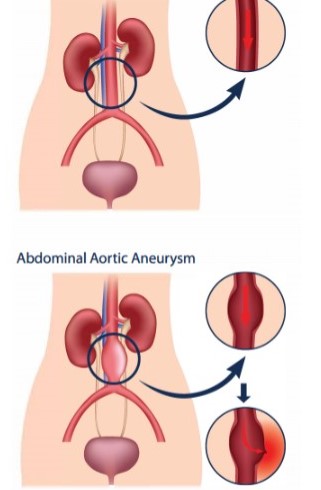
An aneurysm is a weakening or dilatation in a part of an artery. About 15,000 people die of ruptured abdominal aortic aneurysm (AAA) every year in the U.S. About 200,000 new cases of AAA are diagnosed every year. Most of these are diagnosed by tests that are done for unrelated reasons.
The aorta is the main artery that carries blood from the heart to the rest of your body. There are branches, or smaller arteries, that arise off the aorta and supply all your organs, as well as your legs, brain, etc. Aneurysms can occur in those branch arteries, too.
The main danger with an aneurysm is it enlarging and bursting, which is a uniformly fatal event if not treated in time. An aneurysm also contains large amounts of thrombus — or clot — and can shoot it off to the organ it supplies and cause a loss of circulation.
Who Can Have AAA?
They are more common in men of Caucasian ethnicity, in smokers and those who are older. Other associated factors are high blood pressure, high cholesterol levels, and lung issues (chronic obstructive pulmonary disease). Frequently, it runs in families. Rarely, it is seen in patients who have connective tissue disorders.
How Is AAA Diagnosed?
If your doctor suspects you of having an abdominal aortic aneurysm, they will refer you for a simple ultrasound test. Based on the size and extent of the aneurysm, your doctor may refer you to a vascular surgeon.
SYMPTOMS OF AAA
A leaking aneurysm will lead to abdominal and back pain, dizziness, and loss of consciousness.
